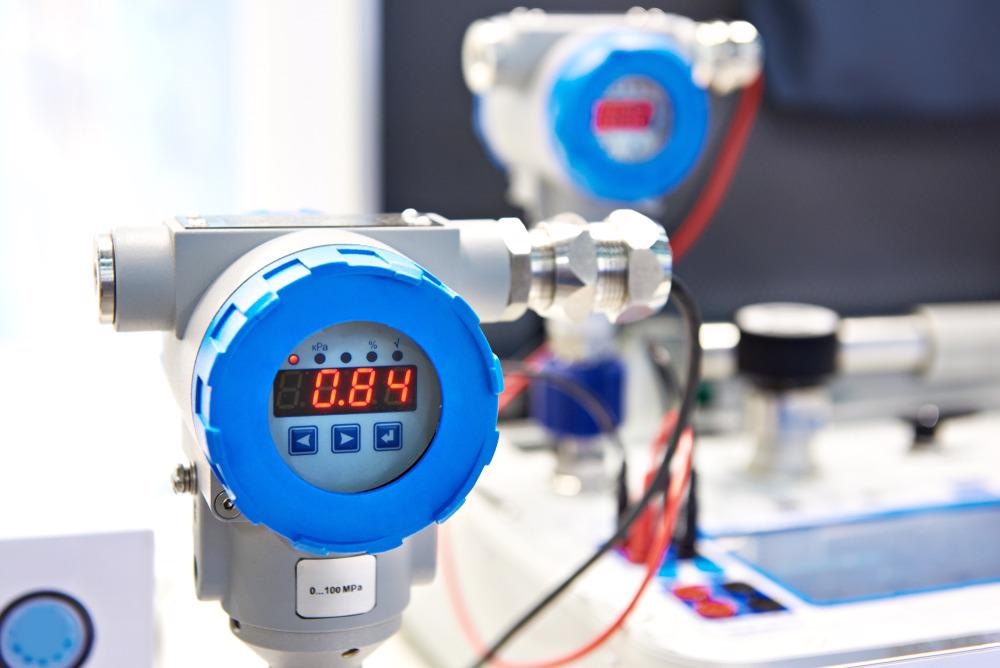This article provides a brief overview of the digitalization processes occurring in the metrological sector, considering the establishment of new innovations in IoT technology.

Image Credit: Sergey Ryzhov/Shutterstock.com
The Rampant Digital Era of Metrological Services
A study published in the journal Measurements: Sensors reviews the digitalization of metrology. Digital technology is rapidly altering society, industry, and the economy based on big data, artificial intelligence (AI), and machine learning (ML) systems.
Recent technical advances and developments in sensing systems, the Internet of Things (IoT), and Telecommunication Technologies (ICT) have been critical to the expansion of Industry 4.0, the creation of international digital infrastructural development, and global economic growth. Metrology's digital transition, quantum-based detection devices, and quantitative information systems are critical for progress in all fields of life.
How Digital Infrastructure is Causing Massive Change
Data and information transmission via digital means is quickly becoming the norm. Cloud services are the platform for information storage and sharing. Validation, self-diagnosis, and other metadata supplied by individual measurement equipment are used by digital infrastructures.
However, individual instrumentation is losing ground to decentralized measuring instruments and sensor technologies. Algorithms and programming become as crucial as data themselves. Many of today's tools and ideas will be replaced by artificial intelligence, sensor fusion, and virtual measuring instruments in the digital era.
Importance of Data in the Digital Age
In the digital era, data is sometimes nicknamed the ‘new oil’. Organizations may unleash great possibilities by establishing data management and control systems as the foundation of their digital workplace program.
Data is merely the first step; it must be "refined" using algorithms. However, because of the massive volume and unpredictability of data, many traditional algorithmic techniques cannot be utilized meaningfully. The research community has created criteria for data discovery, accessibility, interoperability, and reusability (FAIR).
Thus, the use of metrological concepts in science can considerably enhance the quality of scientific data. The same is true for data in commercial and engineering applications, where the FAIR standards ensure that data may be utilized to apply AI technologies.
IoT Based Digital Metrological Transformations
Mustapää et al. published a study in 2020 at the Global Internet of Things Summit (GIoTS) focusing on the advances in digital metrology for IoT applications. Sensors on IoT devices generate a large amount of data. However, while the volume of information has expanded, so has the need to test its veracity. Data collected by IoT devices is not intrinsically reliable, and so may not be suitable for crucial systems.
A digitized validation system has been developed by researchers that connects quantitative assessment quality attributes from metrology to IoT data and allows effective testing and equipment calibration methods. The system is based on two unique metrology strategies: Digital Calibration Certificates (DCC) and the Digital System of Units (DSOU) (D-SI).
A DCC communicates an IoT device's measurement errors and gives a link to its validated tracking network. As part of the SmartCom initiative, a new XML format was created to display measurement data via validation documents in a machine-readable manner termed a Digital System of Units (D-SI). This would enable the validation of the reliability of a measured value, resulting in the creation of a DCC-validated data industry. With the DCC-DLT cloud, the individual consumer may (re)certify their acquired data.
How Are Cyber-Physical Systems Involved in the Digital Age?
A cyber-physical system (CPS) is a physical system combined with digital telecommunications technologies. As a result, CPS are good foundations for complex systems since they mix aspects from several fields. Measured values are often provided by measuring devices via digital-only interfaces, which are increasingly being provided over wireless networks.
Low-cost digital sensors, such as MEMS, may be readily and widely incorporated into CPS. The massive data generated by these gadgets is subsequently employed in later ML and AI systems. Owing to the large volume and complexity of data in CPS, data-driven technologies, such as machine learning (ML) and artificial intelligence (AI), are often used for data analysis.
Limitations of the CPS Systems
On the one hand, the metrological accuracy and dependability of CPS systems with integrated modern MEMS sensors are uncertain. Calibration or full metrological characterization of MEMS sensors, on the other hand, is neither affordable nor reasonable. As a result, innovative forms of characterization for such sensors must be created.
Future Perspective
Standardization bodies are attempting to develop machine-readable, intelligent specifications. In the future, this will allow robots to interpret standardized data without the need for user intervention. When metrological solutions are based on regulations, this opens up new opportunities.
Additionally, the creation of digital, machine-readable certifications has begun in the validation, calibration, and research labs. This opens up new opportunities for calibration solutions in terms of the volume and relevant information that may be delivered.
While digital metrology is extremely beneficial, work procedures must be thoroughly evaluated and adjusted to new obstacles. Operations must be precisely specified, linearized, and synchronized. Only then would interoperability allow for the expansion of current facilities, adaptation to new advances, and implementation of the futuristic computerized metrology strategy.
More from AZoM: What are Profile Roughness Parameters?
References and Further Reading
Eichstädt, S., Keidel, A., & Tesch, J. (2021). Metrology for the digital age. Measurement: Sensors, 18, 100232. Available at: https://doi.org/10.1016/j.measen.2021.100232
Mustapää, T. et. al. (2020, June). Digital Metrology for the Internet of Things. In 2020 Global Internet of Things Summit (GIoTS) (pp. 1-6). IEEE. Available at: https://doi.org/10.1109/GIOTS49054.2020.9119603
Kuster, M. (2020, June). A measurement information infrastructure's benefits for industrial metrology and IoT. In 2020 IEEE International Workshop on Metrology for Industry 4.0 & IoT (pp. 479-484). IEEE. Available at: https://doi.org/10.1109/MetroInd4.0IoT48571.2020.9138200
Takatsuji, T. Watanabe, H. Yamashita, H. 2019. Blockchain technology to visualize the metrological traceability, Precis. Eng. 58. 1–6. Available at: https://doi.org/10.1016/j.precisioneng.2019.04.016
Disclaimer: The views expressed here are those of the author expressed in their private capacity and do not necessarily represent the views of AZoM.com Limited T/A AZoNetwork the owner and operator of this website. This disclaimer forms part of the Terms and conditions of use of this website.